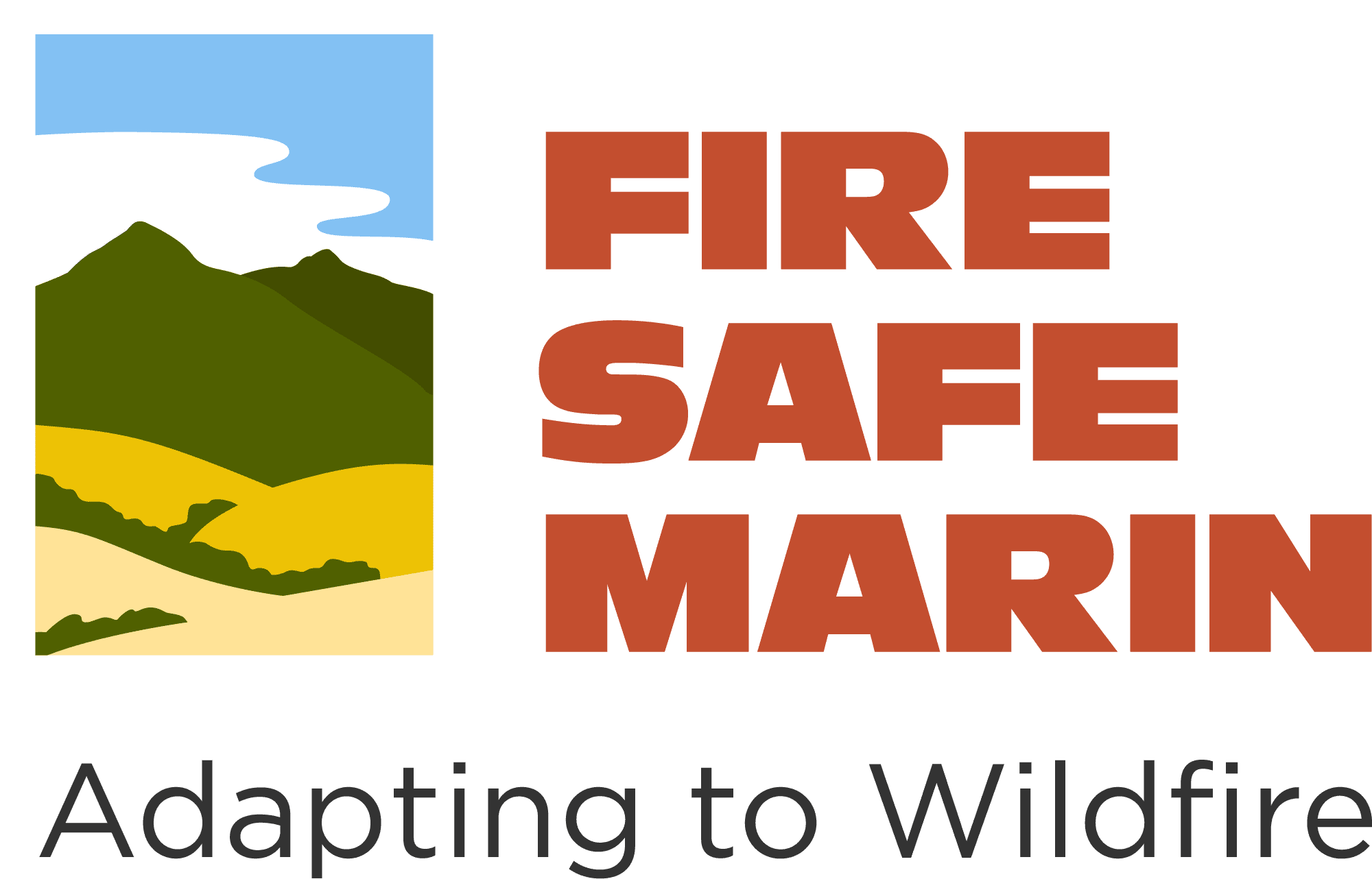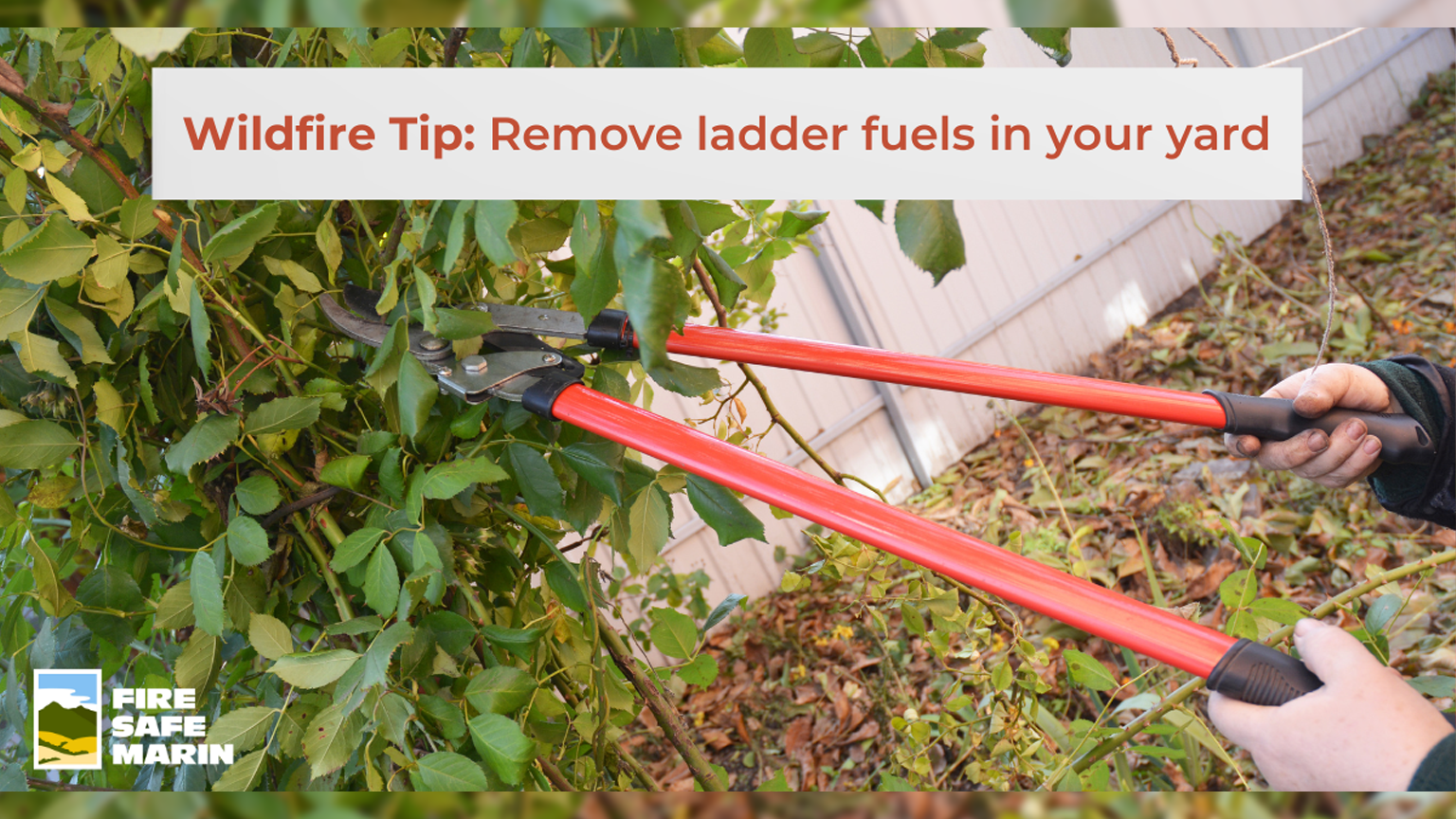Crack the Code of Wildfire Home Evaluations
Did you know home inspectors are going door to door in Marin? The Marin Wildfire Prevention Authority (MWPA) has been funding inspections in Marin that focus on defensible space, home hardening, and fire-adapted landscaping. After each inspection, residents receive a personalized report with the steps they should take to help protect their home from wildfire. Marin is taking the threat of wildfire seriously and taking action!
Here are 9 of the most common issues found in the report.
1. Fire ladders
A fire ladder is vegetation that allows fire to spread up from the landscape into a tree.
What to do?
- Create separation by pruning or removing the ladder vegetation, or raising the height of the lowest limbs of the nearby tree.
- Prune low limbs up to a minimum of 6 feet, and potentially as high as 10 feet (but no more than ⅓ of the height of the tree).
- Trees on slopes require the limbs to be pruned higher or spaced further apart.
2. Annual grasses and weeds
Dry grass is easily ignited by embers.
What to do?
- Cut dry grasses and weeds within 100′ of structures with a weed eater or mower, to a height of 4″ or less.
- Cut grass in the morning, when temperatures are cool, and be careful not to create sparks.
- Never cut grasses during a Red Flag Warning.
- Rake and remove grass clippings within 30′ of structures.
3. Leaf litter
60-90% of homes that are destroyed in wildfire events ignite because of hot embers blowing ahead of the fire. These embers land on dead leaves and spread fire to the house.
What to do?
- Remove leaf litter and other debris within 5 feet of any structure (Zone 0). More than 30′ from structures, a thin layer (3″ or less) of leaf litter may be acceptable to prevent erosion and hold soil moisture.
- Rake and dispose of leaf or needle litter in green waste cans. Pay attention to areas where leaves often gather: at the base of homes, trees, or shrubs.
4. Firewood
Stacks of wood can easily be ignited by flying embers and spread fire to any structure. Don’t let your firewood stack be the kindling that ignites your home!
What to do?
- Relocate firewood to a location more than 30′ from structures, or stored in an enclosed, ember-resistant container or space.
5. Dead and dying trees
All plants can burn if dead, poorly maintained, or drought-stressed.
What to do?
- Remove dead plants.
- Cut and remove dead trees.
- Work safely, and hire a licensed tree service or arborist if necessary.
6. Tree limbs and shrubs encroaching on roadway or driveway
Properly maintaining vegetation near your driveway and along the roadsides next to your property will improve the evacuation paths for you and your family and provide easier and safer access to first responders, it’s a win, win!
What to do?
- Limb trees to provide at least 15′ of unobstructed vertical clearance above the improved road surface.Tree limbs must not extend into roadways or driveways
- Prune shrubs back so that no part of the shrub extends over the improved road surface.
- No combustible growth is allowed within 10′ of the road’s edge.
- Property owners are responsible for maintaining roadside vegetation, even in the public right-of-way.
7. Combustible mulch
Most mulches are combustible, and in a wildfire-prone landscape can be a major contributor to homes igniting.
What to do?
- Remove or replace combustible mulch within 5 feet of structure with gravel or stone mulches.
- Replace combustible mulch more than 5’ from structures with composted wood chips, which are the best choice for residential landscape use.
8. High visibility address numbers
Address numbers should be made visible to help responders easily identify your home, which could improve their response time.
What to do?
- Repaint or replace address numbers to be at least 4 inches tall and displayed on a contrasting background.
- Reflective and/or illuminated numbers are best for visibility at night or in smoky conditions. Numbers painted on a curb do not meet this requirement.
9. Tree limbs overhanging a structure
Branches or limbs that overhang any structure can be hazardous.
What to do?
- Prune limbs with foliage where they overhang buildings. Exceptions are allowed if removal of the limb would jeopardize the health or stability of the tree.








